Sheesh Mahal
How enthralling is it for you to connect back with your past? Does exploring the ever-before unexplored intricacies of your historical past fascinate you? There is no denying that the magnificence of the monarchs has always captivated one’s mind. The stories and lives of Emperors and their kingdoms emerging centuries ago never grow old for you. There is no other way; you can disconnect from your history and past because it always continues to fascinate you. If you’re in Lahore and looking for a fantastic photo opportunity, look no further than Sheesh Mahal. This architectural marvel is definitely worth a visit, even if you’re not into the history or culture of Mughal architecture. The building’s intricate carvings and delicate detail will take your breath away.
Be sure to take some photos while you’re there – you’ll be glad you did!
Interesting Facts about Sheesh Mahal Lahore
Mumtaz’s enthusiasm and love for Shah Jahan have been memorialized entirely at Sheesh Mahal. The love story that led to the construction of this tower is as fascinating as the structure itself.
According to folklore, Mumtaz Mahal, Shah Jahan’s cherished bride, longed to float in the stars as she saw in her dreams. Subsequently, Shah Jahan built it for her in Lahore to make her wish come true.
Unfortunately, she died before entering the palace, which pained the king. Later, as a homage to her, Shah Jahan had his warriors construct the Taj Mahal in India.
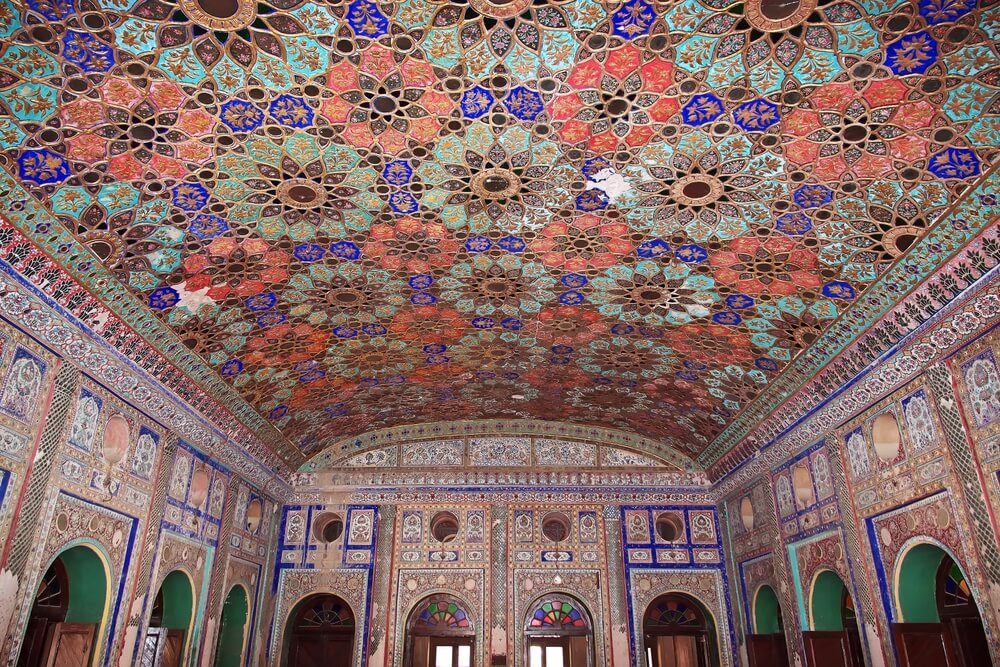
Even today, Sheesh Mahal is an architectural marvel. Tourists who enter the palace cannot help but be captivated and amazed by its splendor and elegance. The palace continues to tell stories and displays exquisiteness and love in every aspect.
History of Lahore Sheesh Mahal
It is one of the most gorgeous Mughal palaces, and people from all over the world visit and study it. The Sheesh Mahal is located in the northwestern corner of Lahore Fort, within reach of the Shah Burj block.
It was constructed between 1631 and 1632 during the reign of the Mughal emperor Shah Jahan. The ornately designed white marble pavilion is embellished with exquisite mirror work.
Only the monarch, queen, royal family, and close friends had access to this hall. It is one of 21 monuments constructed by Mughal emperors within the walls of the vast Lahore fort. It is known as the “Jewel of the Fort” because of its unusual design. It has also been a UNESCO World Heritage Site since 1981.
The love story that inspired the building’s creation is as unique as the tower. According to history, Mumtaz Mahal, Shah Jahan’s adored wife, wished to float in the stars as she saw in her dream, and to satisfy her wish, Shah Jahan built it for his beloved queen Mumtaz Mahal when she lived in Lahore.
Unfortunately, she died before entering the palace, leaving the king distraught. Later, Shah Jahan directed that the Taj Mahal be built as her memorial in India.
The Architecture of Sheesh Mahal
This magnificent palace contains a vast hall in front where royals used to sit, as well as various rooms on the sides and behind the hall. Mirror work and pure gold work, pietra dura work where semi-precious stones are inserted into white marble, perforated marble screens, and an exquisite mosaic work with convex glass called arena Kari with Monabat Kari are the main highlights of this palace.
The Harm, a chamber for the fort’s females, was located in the palace. A marble screen magnificently carved out in tendril, floral, and geometrical patterns adorned the rear room homes. The marble stone slabs utilized there were known as Sang-e-Musa, Sang-e-Abri, and Sang-e-Badal, and they added elegance to the palace’s expansive courtyard.
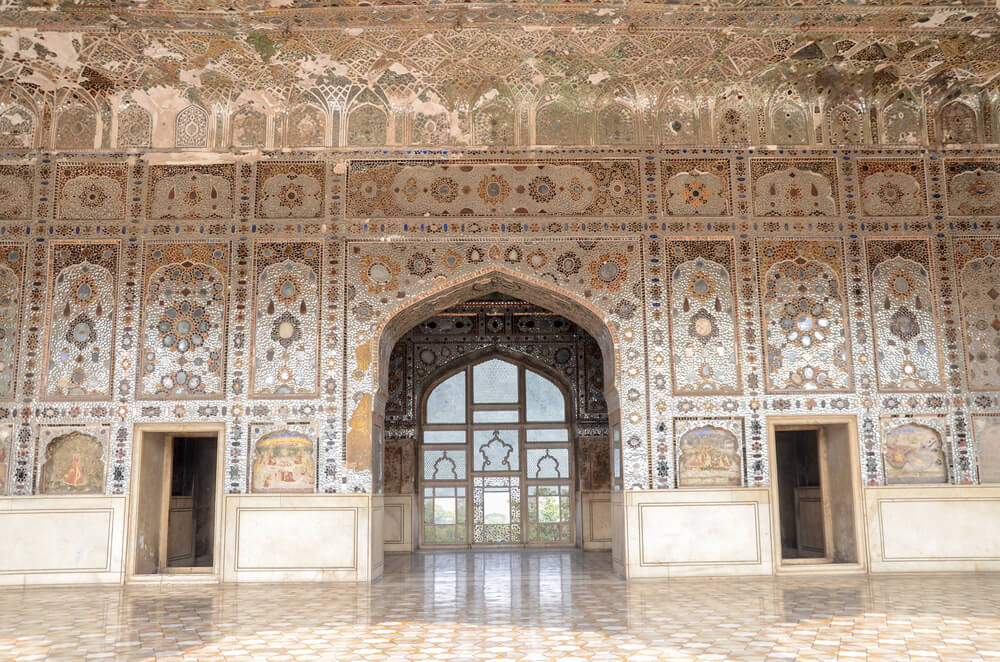
In the center of Sheesh Mahal is a shallow water basin with four jet fountains that were no longer functional but were formerly functional and looked lovely.
The front of the palace has a picture wall with paintings illustrating Mughal princes’ everyday activities in mosaic art. There is a jharokha where people congregate to see princes play for fun, admire the quality of the picture wall, and see the emperor sitting.
Stand at one edge of Sheesh Mahal; You can view the Badshahi Mosque, Maharaja Ranjeet Singh’s Samadhi, and the Minar-e-Pakistan. It is a breathtaking perspective that shows the progression of history.
Attractions Offered By Sheesh Mahal Lahore
Sheesh Mahal offers a wide variety of attractions to its visitors.
Giant Elephant Stairs
The building is accessed via a flight of stairs known as the Giant Elephant Stairs. These stairs get their name from the two elephant statues that stand guard at their base. The Giant Elephant Stairs are just one of the many beautiful features of the Sheesh Mahal and are well worth a visit.
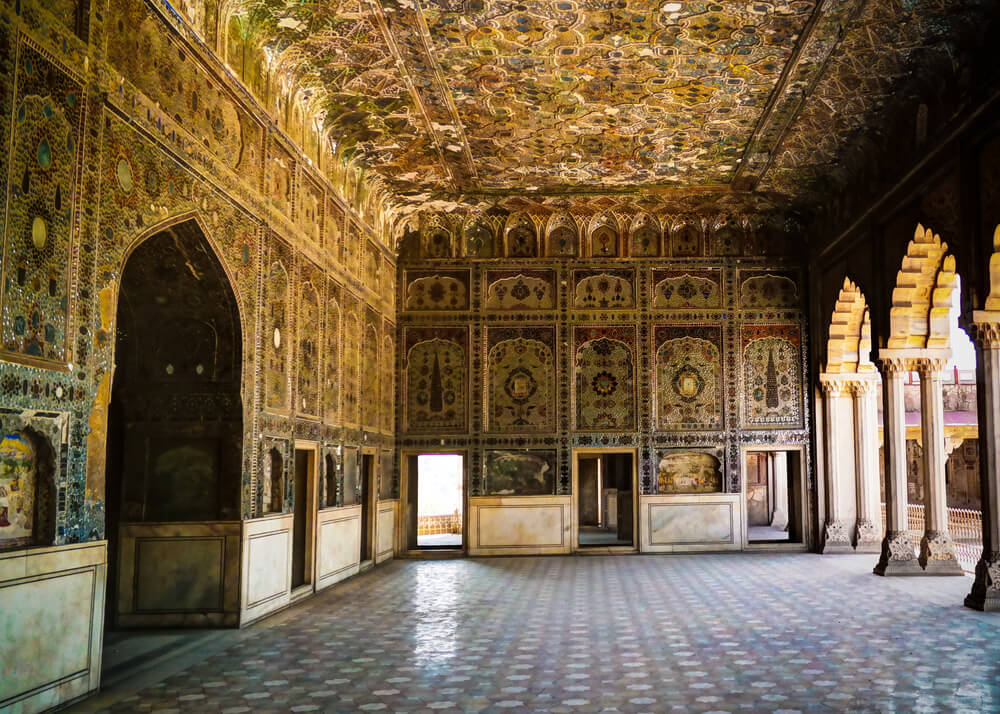
Spacious Hall
There is a spacious hall in Sheesh Mahal. The royals used this hall to sit and enjoy the beauty of the Mahal, and the exciting fact is that only royals were allowed to enter the sheesh Mahal, consisting of several rooms, each more lavish than the last. The mirrors reflect light so that the entire palace is bathed in a soft glow, making it a magical place.
Main Features of Sheesh Mahal
The façade opens into the courtyard and comprises five cusped marble arches supported by paired columns.
Precious stones are inlaid in the engrailed spandrels and bases. The pavilion is shaped like a semi-octagon. It comprises apartments with gilded domes beautifully ornamented with pietra dura, convex glass, and mirror mosaic (Ayina Kari) made up of hundreds of tiny mirrors. They light candles at night.
The decorative elements are stucco tracery (Munabat Kari) and carved marble screens in geometrical and tendril motifs. The central hall’s roof rises two floors. The hall was initially covered with fresco paintings, eventually replaced with multicolored glass mosaics.
Female Portion (Harem)
One of the most striking features of Sheesh Mahal is the harem or women’s quarters. The harem was designed to be a secluded and luxuriously appointed space where the emperor’s wives and concubines could relax and enjoy themselves.
The harem at Sheesh Mahal is decorated with hundreds of delicate mirrors, which shimmer and reflect the light in a thousand different directions.
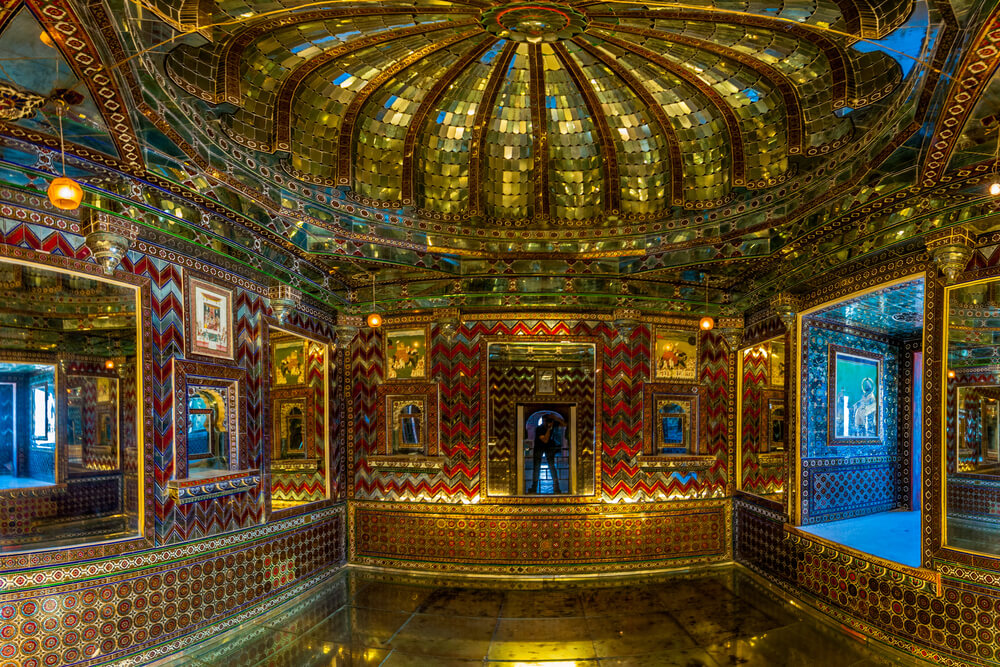
Marble Stone Slabs
A wonderfully carved marble screen in a tendril, floral, and geometrical patterns adorned the back chamber homes. The marble stone slabs used there were known as Sang-e-Musa, Sang-e-Abri, and Sang-e-Badal, and they add to the grandeur of the palace’s spacious courtyard.
Four Jet Fountains
Sheesh, Mahal is famed for its intricate decoration, which includes numerous mirror mosaics and four jet fountains. The jet fountains are located in each corner, and each is made up of dozens of small jets that spray water into the air. The jet fountains are a popular attraction for tourists, who enjoy taking photos in front of them.
However, the fountains are more than just a pretty sight; they also serve an essential function in keeping the Sheesh Mahal cool during the summer.
On a hot day, the jet fountains can help to lower the temperature inside Sheesh Mahal by several degrees, making it a more pleasant place to visit.
Picture Wall
The front of the palace contains a picture wall with paintings illustrating Mughal princes’ everyday activities in mosaic art. There is also a jharokha where people gather to see princes play for entertainment, admire the excellence of the picture wall, and see the emperor sitting.
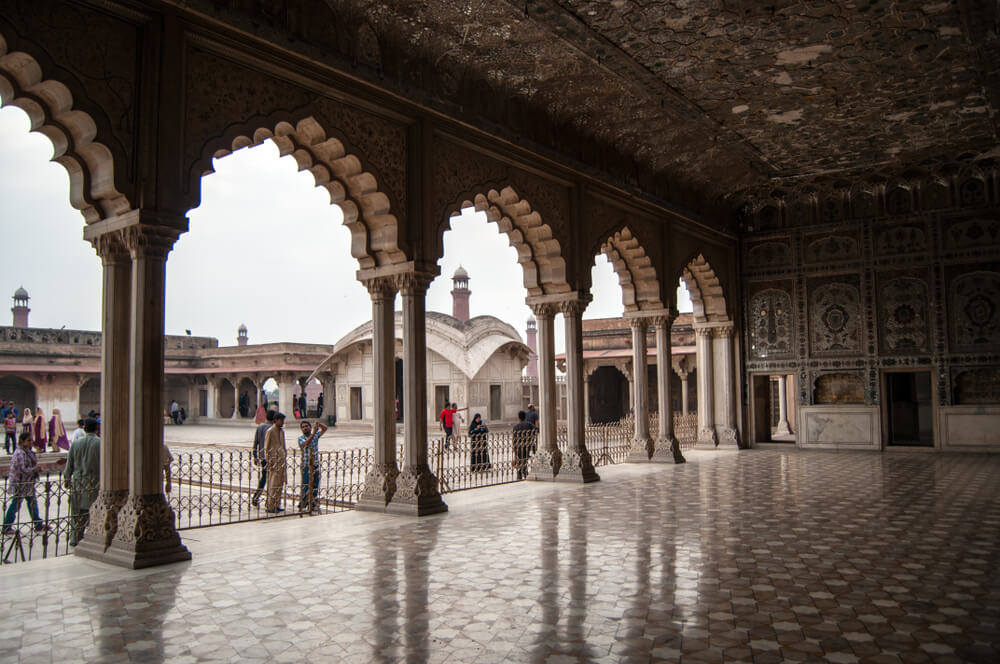
If you stand at one edge of Sheesh Mahal, you can see the Badshahi Mosque, Maharaja Ranjeet Singh’s Samadhi, and the Minar-e-Pakistan. It is a breathtaking perspective that shows the progression of history.
Fantastic Night View with Candles
The walls and ceiling of Sheesh Mahal are adorned with thousands of mirrors, which reflect the light of candles and create the illusion of twinkling stars. Sheesh, Mahal is best experienced at night, when the candles are lit, and the mirrors come to life.
As you gaze up at the dazzling display, it’s easy to see why Sheesh Mahal is one of the most popular attractions in Lahore Fort.
Sheesh Mahal Lahore Ticket Price
The Walled City of Lahore Authority (WCLA) has imposed an Rs100 entry fee within Lahore Fort, which was previously accessible for tourists who purchased an entry ticket for the Lahore fort for Rs30 only.
Sheesh Mahal Timings
Sheesh Mahal opens from 9:00 AM to 5:00 PM.
Location of Sheesh Mahal
Address: H8Q7+W65, Walled City of Lahore, Lahore, Punjab
Conclusion
Sheesh Mahal is an excellent tourist destination for those looking to learn about Mughal history and culture. The site is well-maintained, and the staff is knowledgeable and passionate about their work. Itoffers a unique opportunity to see first-hand how artisans created some of the most intricate designs in Mughal architecture. It highly recommends paying a visit if you find yourself in the area.
FAQs
What is Sheesh Mahal famous for?
Sheesh, Mahal is famous for its lavish design and decoration, including hundreds of tiny mirrors that shimmer and reflect the light in thousands of different directions.
Who built Sheesh Mahal Lahore?
Sheesh, Mahal Lahore was built by the Mughal Emperor Shah Jahan in the 17th century.
Is Sheesh Mahal actual?
Yes, Sheesh Mahal is an actual place; you can visit it by going to the Lahore fort in Lahore.
Why was Sheesh Mahal built?
Sheesh, Mahal was built as a summer palace for the Mughal Emperor Shah Jahan and his family.
